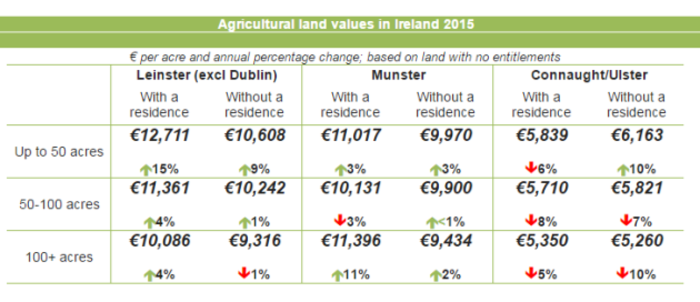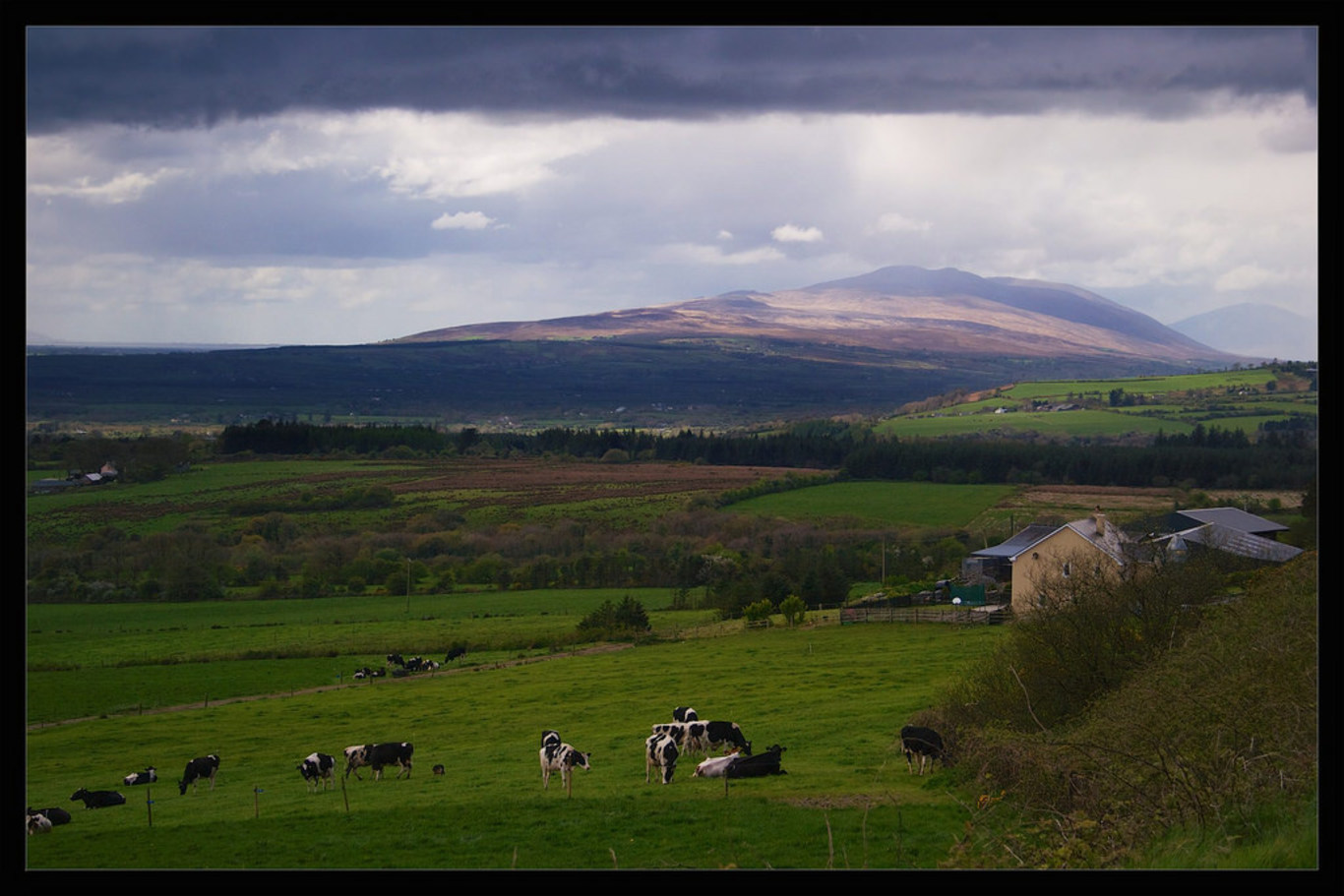Brexit fears are driving down the value of farms in parts of Ireland
Cheap milk and the pending British referendum have helped kill investor interest.
CHEAP MILK AND Brexit fears are driving down the value of farms in parts of the country, researchers say.
A new report from the Society of Chartered Surveyors Ireland and agri-food semi-state Teagasc said the price of agricultural land dropped in both Ulster and Connaught during 2015.
That compared to rises in Leinster and Munster, indicating a growing geographical gap in the outlook for the sector.
The study, which is the third in a series of annual reports by the two bodies on the state of the land market in Ireland, examines prices across the 26 counties of the Republic.
It found that prices in Leinster increased 15% year-on-year to €12,700 per acre in 2015 for properties of fewer than 50 acres that included residences.
In Munster, prices were up 3% to €11,000 per acre, with an even-greater increase in the value of larger farms.
However, it was a different story in Connaught and Ulster, where the price per acre fell in five of the six price categories measured. It was the second year in a row that prices trended downwards.

Click here for a larger version
The price per acre on a small farm with a residence fell by 6% to €5,800, while prices in medium- and larger-sized holdings fell by between 5 and 10%. However the price of an acre on a small farm without a residence rose by 10% to €6,200.
Uncertainty and lower prices
Teagasc economist Jason Loughrey said 2015 was a mixed year for farm values with a slight drop in interest from dairy farmers and cash buyers.
He said that the short-term outlook for the market is dominated by uncertainty over the profitability of the farming sector, adding that a major cause of the apprehension is the possibility of a British exit from the EU.
Irish farmers and food producers are tipped to be the hardest hit in the case of a so-called Brexit as the UK accounts for €4 billion of the Republic’s exports for the sector.
The value of sterling against the euro has also dropped in the lead-up to next month’s referendum putting a further brake on trade.
Another dominant factor was the drop in milk prices, which have nearly halved over the past two years. Producers have complained the cost of production is now well above the returns they are getting on the commodity.
“The decline in milk prices during 2015 led to considerably less interest in this area and resulted in less market activity in the second half of the year,” Loughrey said.
Thomas Potterton of the Society of Chartered Surveyors Ireland said the pattern of contrasting regional price movements had become a trend in the last few years.
“The Leinster region was the best performer in 2015 and prices for farm holdings in the province are now between 31% and 38% higher than they were in 2010,” he said.
“In stark contrast to the other two regions prices in Connaught (and) Ulster are now well below those observed in 2010, the only exception being lands up to 50 acres without a residence, where prices are similar to those of six years ago.”






